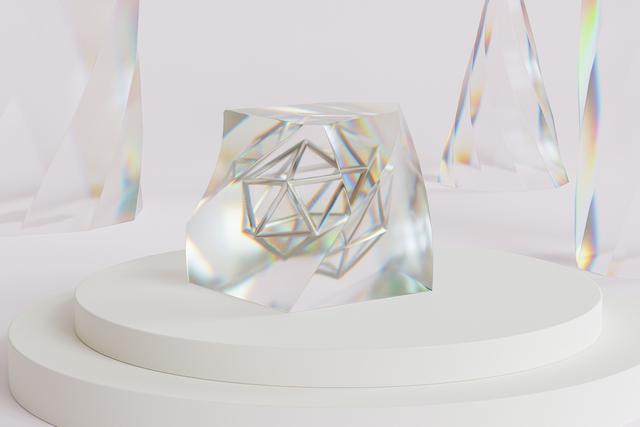Introduction:
In game development, 3D skyboxes serve as a powerful tool to create expansive and visually stunning environments. With Hammer, the level editor for Source engine games, you can construct intricate 3D skyboxes that add depth, realism, and immersion to your game world. In this step-by-step guide, we will walk you through the process of creating a 3D skybox in Hammer, enabling you to enhance your game’s atmosphere and captivate players with awe-inspiring vistas.
###Table of Contents:
- Understanding 3D Skyboxes and Their Role
- Setting Up the Hammer Editor
- Creating the Skybox Geometry
- Building the Skybox Texture
- Applying the Skybox Texture to the Geometry
- Setting the Skybox Parameters
- Compiling and Testing
- Optimizing the 3D Skybox
- Conclusion

1. Understanding 3D Skyboxes and Their Role:
Before we dive into the creation process, it’s important to grasp the significance of 3D skyboxes. A 3D skybox is a separate area in your level that represents a distant backdrop visible from within the playable area. It adds depth and realism to your game by mimicking a distant environment, such as mountains, clouds, or even cityscapes. By creating a 3D skybox, you can extend the perceived boundaries of your level and create an immersive experience for players.
2. Setting Up the Hammer Editor:
To begin, ensure you have the Hammer editor installed and set up for your chosen Source engine game. Launch Hammer and open the level you want to add the 3D skybox to. Familiarize yourself with the Hammer interface, including the different views and tools available.
3. Creating the Skybox Geometry:
To create the geometry for your 3D skybox, follow these steps:
- In the Hammer editor, navigate to the top menu and select “Tools” -> “Options.”
- In the “3D Skybox” tab, set the appropriate dimensions for your skybox. This will define the size of the skybox area within your level.
- Use the available brush or model tools to construct the desired geometry for your skybox. This may include mountains, buildings, or other landscape elements.
- Ensure that the skybox geometry does not intersect with the playable area of your level, as it should be visible only in the distant background.
4. Building the Skybox Texture:
Creating a visually appealing skybox texture is crucial for an immersive experience. Here’s how you can build your skybox texture:
- Use a graphics editing software like Photoshop to design or gather the textures for your skybox. These textures can include sky gradients, clouds, and other environmental elements.
- Create six separate square images, each representing a face of the skybox cube (front, back, left, right, top, and bottom).
- Ensure that the dimensions of each image are consistent and optimized for performance. Common dimensions are 1024x1024 pixels or 2048x2048 pixels.
- Apply the textures to the respective faces of the skybox cube. Make sure the textures seamlessly align for a cohesive skybox appearance.
5. Applying the Skybox Texture to the Geometry:
Now that you have your skybox textures ready, it
's time to apply them to the skybox geometry:
- In the Hammer editor, select the skybox geometry you created earlier.
- Open the “Texture Application” tool and choose the appropriate skybox texture for each face of the skybox cube.
- Align and scale the textures as necessary to achieve the desired look for your skybox.
6. Setting the Skybox Parameters:
To define the properties and behavior of your skybox, follow these steps:
- Select the skybox geometry and open the “Properties” panel in Hammer.
- Set the skybox properties, such as fog, lighting, and distance scaling, to match the desired visual style and atmosphere of your level.
- Experiment with different settings to achieve the desired effect. For example, adjusting fog density or color can create different moods within the skybox.
7. Compiling and Testing:
Once you have configured the skybox properties, it’s time to compile and test your level:
- Compile your level using the appropriate compile tools for your Source engine game.
- Launch the game and load the compiled level to observe the 3D skybox in action.
- Explore the playable area of your level to ensure that the 3D skybox appears correctly and enhances the overall visual experience.
8. Optimizing the 3D Skybox:
To optimize your 3D skybox for performance, consider the following techniques:
- Optimize the skybox texture sizes to balance visual quality and performance.
- Limit the complexity of the skybox geometry to reduce rendering overhead.
- Use appropriate LOD (Level of Detail) techniques for distant skybox elements to optimize performance without sacrificing visual fidelity.
- Test your level on different hardware configurations to ensure optimal performance across a range of systems.
9. Conclusion:
Creating a 3D skybox in Hammer allows you to elevate your game’s visual quality and immerse players in breathtaking environments. By following this step-by-step guide, you now have the knowledge to construct impressive 3D skyboxes that enhance the atmosphere and realism of your Source engine game. Experiment with different designs, textures, and settings to create unique and captivating skybox experiences that will leave players in awe.
You May Also Like:
Boost Your Productivity with Meta Quest 3: A Comprehensive Guide
How to Use Skybox VR on Oculus Quest 2&3- Your Gateway to Virtual Reality Adventures
How to Get Steam VR Home: A Quick Guide

